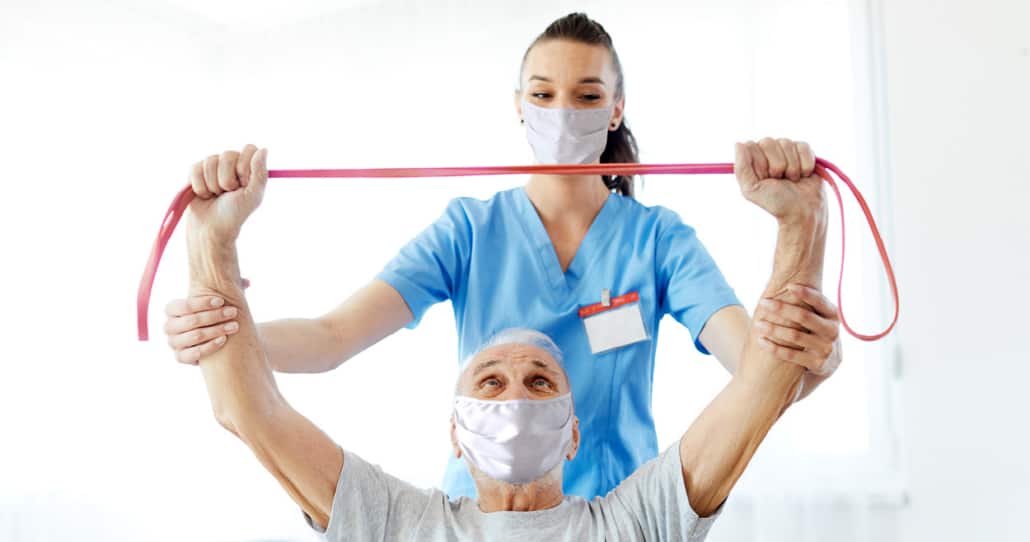The Role of Acute Rehabilitation in COVID-19 Recovery
Many people think of COVID-19 as an illness that only impacts the respiratory system. However, some patients with moderate to severe symptoms can see impacts beyond that. Because of long hospitalizations and extended dependence on a ventilator, patients can experience both a pulmonary and neurological impact.
Neurological Effects
The neurological effects come from the length of time a patient is dependent on a ventilator. During that time a patient will experience an oxygen decline. This can lead to anoxia and cognitive thinking and processing issues. Patients who have severe symptoms can also develop post-traumatic stress syndrome, depression, and anxiety after being in the ICU or on a ventilator for an extended period of time.
Also, during a lengthy hospitalization, especially in the ICU, a patient may be taking multiple types of medications. While prescribed medications are there to save a patient’s life, the individual may see an impact. For example, they may experience issues with messaging to their core muscles like the hips and shoulders. Ultimately this leads to critical illness myopathy.
Physical & Long-term Effects
Long-term symptoms can affect the patient’s physical strength. The virus can damage organs, including the lungs, heart, and brain, requiring extended care and rest. While rest is necessary for recovery, it can lead to weakened mobility and overall function.
The integration of physical, occupational, and speech therapy into a patient’s recovery plan will allow them to build up strength. All these therapy disciplines address different areas and work on getting the patient back to their maximum independence.
Physical therapy works on how the patient interacts with their environment. Occupational therapy focuses on specific goals that the patient may have, including their activities of daily living. Speech therapy supports patients before and after weaning off a ventilator and/or feeding tube to help with swallowing and verbal communication.
Depending on the severity and longevity of the symptoms, lifestyle changes may be required. According to the Mayo Clinic, COVID-19 can make blood cells more likely to clump up and form clots leading to heart attack or stroke. Education in this area is important for a safe transition home.
Post Recovery
Medical journals are discussing the importance of healthcare systems preparing for extended care. This means having adequate resources at an acute level for rehabilitation post-recovery from COVID-19. “The really good news is we are seeing people recover,” said Mary Jo Jacobson, CEO of San Joaquin Valley Rehabilitation Hospital. “We’re seeing them recover well, and they’re coming to rehabilitation hospitals exactly for that reason.”




